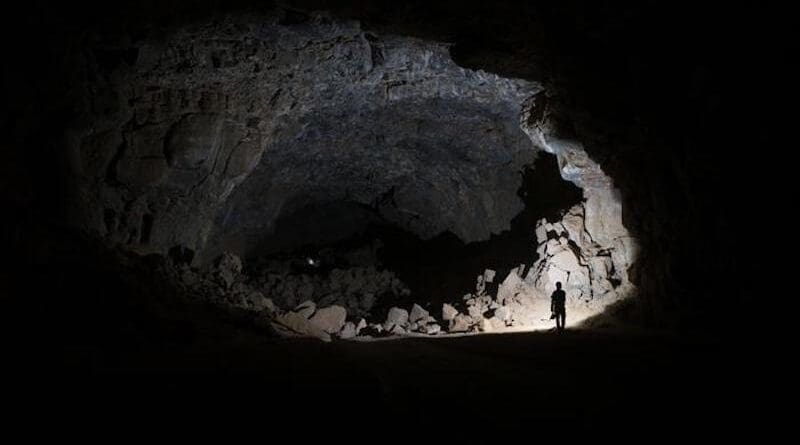Humans Occupied A Lava Tube In Saudi Arabia For Thousands Of Years
A large lava tube in Saudia Arabia provided valuable shelter for humans herding livestock over at least the past 7,000 years, according to a study published in the open-access journal PLOS ONE by Mathew Stewart of Griffith University, Brisbane and colleagues.
Research in northern Arabia over the last decade has highlighted a diverse Holocene archaeological record. However, the timing of human occupations and their connections with the nearby Levant remain poorly understood, primarily due to poor preservation of organic remains in the region’s arid conditions. To circumvent this problem, Stewart and colleagues focused investigations on caves and other underground settings where ancient materials are sheltered from sun, wind and high fluctuations in temperature. In this study, they analyze an archaeological site from a lava tube called Umm Jirsan located in the volcanic field of Harrat Khaybar in Saudi Arabia, approximately 125km north of Medina.
Within the lava tube are artifacts, rock art, and skeletal remains that document repeated human occupation over at least the past 7,000 years. The lava tube seems to have been an important resource for pastoralists keeping and herding livestock, as evidenced by rock art and animal bones representing domesticated sheep and goats. Isotopic analysis of human remains reveals an increase over time in C3 plants such as cereal and fruit in the diet, possibly linked to a rise in oasis agriculture in the Bronze Age.
The authors conclude that Umm Jirsan was likely not a permanent home, but instead a valuable stopping point for people traveling between oasis settlements. Lava tubes and other natural shelters were valuable resources for communities surviving in a challenging environment, and with further investigation, they present a key source of archaeological information about the history of human occupation in Arabia.
The authors add: “Exploring Arabia’s hidden past, our study uncovers millennia of human occupation within and around the Umm Jirsan lava tube, shedding light on ancient lifestyles and adaptations to environmental change in this harsh desert environment.”

